NOTE: This post is part of a continuing series of observations: [ Next >> ]
Many of you have been following, with great interest, the unusual occurrence of a pair of young Whooping Cranes arriving at Lake Ray Hubbard in Rowlett, Texas this spring. Eleven days ago those two cranes decided to move on. The latest reports have them in Wise County several miles to the northwest of DFW. I reported on their exodus last Tuesday, and at the time I believed that was the end of a once in a lifetime experience. I was wrong.
About the time the two Lake Ray Hubbard cranes were moving out of the area, another set of five Louisiana Whooping Cranes came up from southeast Texas and took up station at Lake Lewisville in Denton County. Unbelievable, right?
On Monday evening (June 10, 2013) I made my way to the lake to have a look for myself. Sure enough, the five cocky juvenile cranes were foraging in the tall grass and weeds in a floodplain adjacent to the lake. Difficult to see at first because of the obscuring grass, I soon noticed the bobbing of their heads as they would occasionally take a break from feeding to check their surroundings for danger.
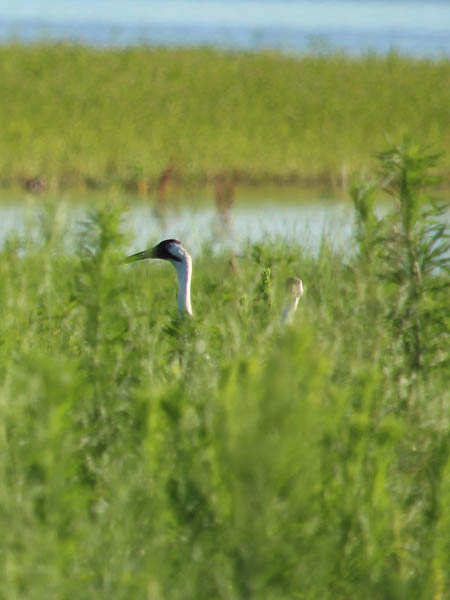
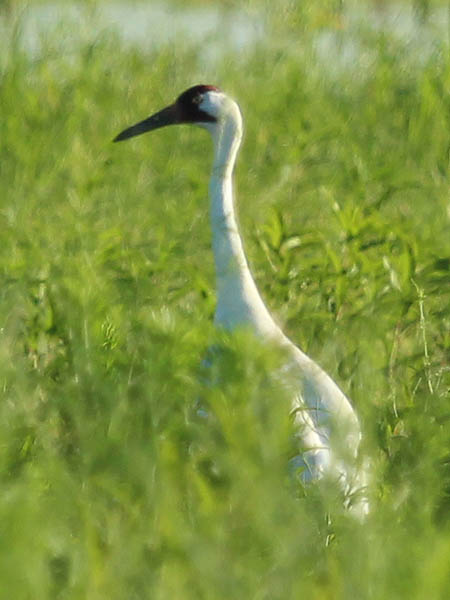
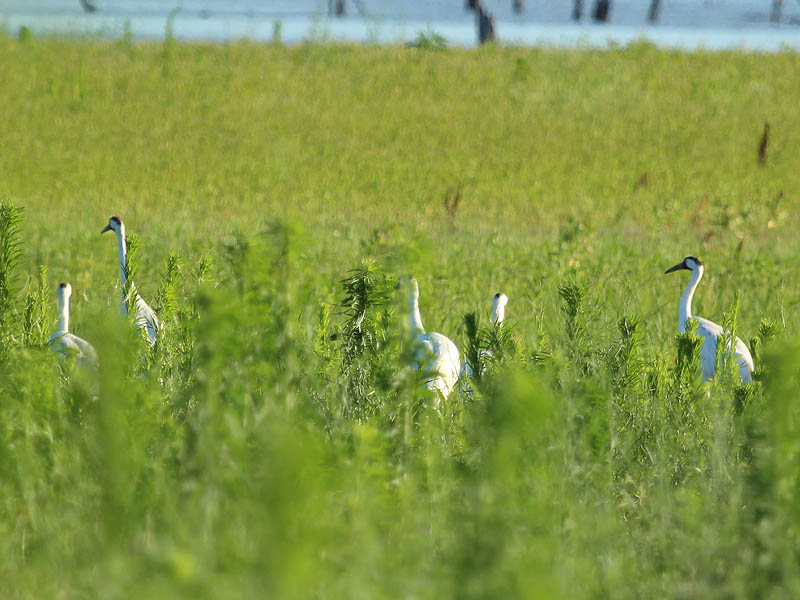
The cranes roamed far and wide while I was on site. They changed location five times while I was observing—flying most of the time and walking on one occasion. From the spot where I first found them, they soon took to the air and flew a short distance to the water’s edge. At this location a couple of the birds engaged in an interesting behavior. The two birds faced each other and jumped off the ground flapping while their wings. They repeated this action several times.

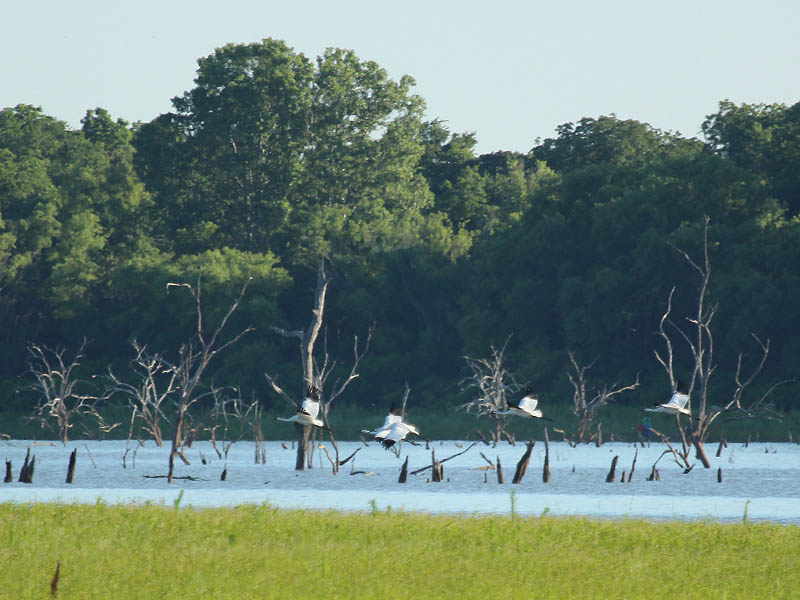


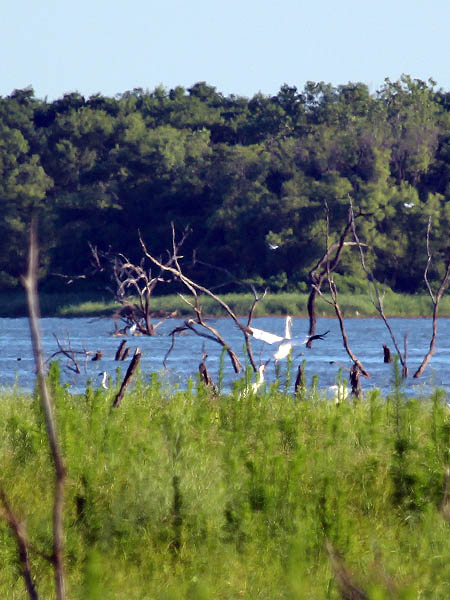
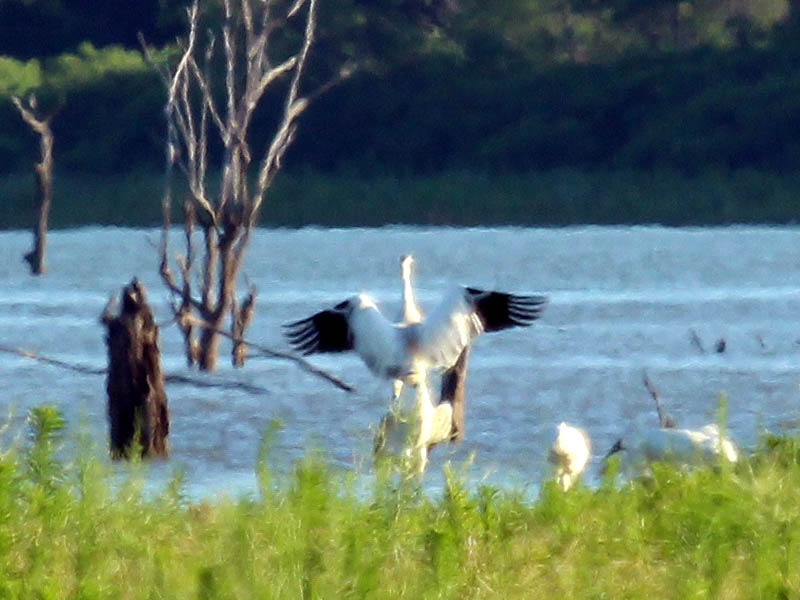
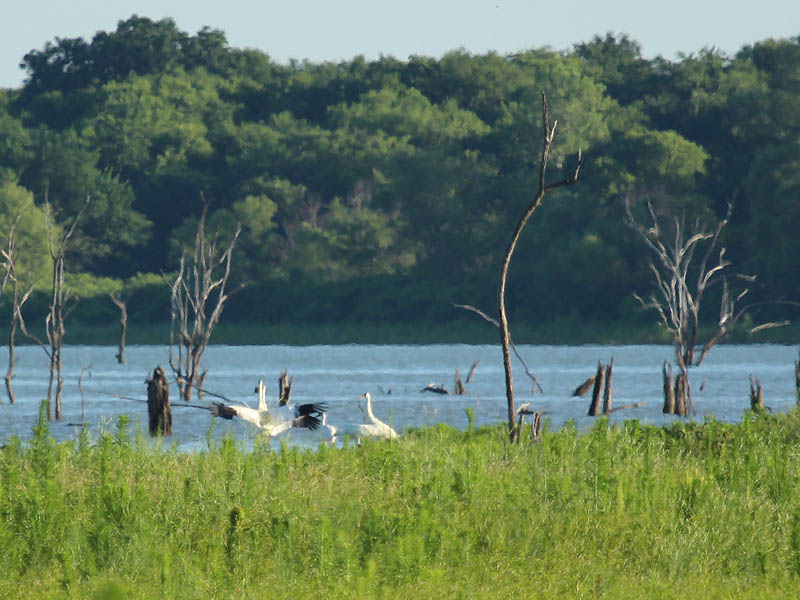

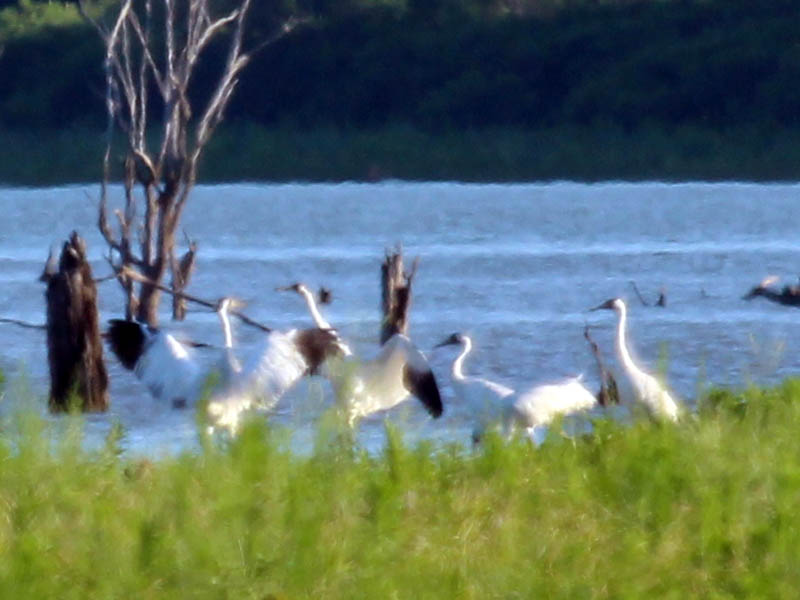
After that episode settled down a bit the group began foraging along the shore. They did this for only a short time before taking flight again.
This time they flew far to the east and began foraging in the margins between the floodplain and a cow pasture. Here, I watched as one crane separated from the other four. As the distance between the cranes got larger I expected to see the lone bird turn and rejoin the group of four. The exact opposite happened, as illustrated in the video below.

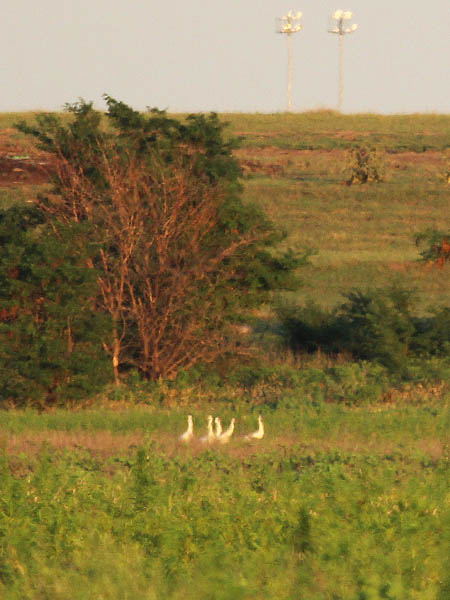
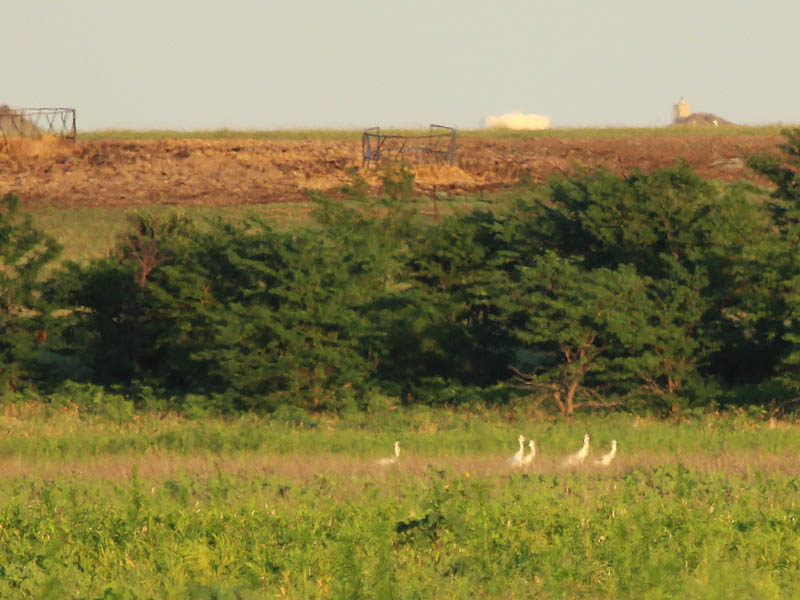
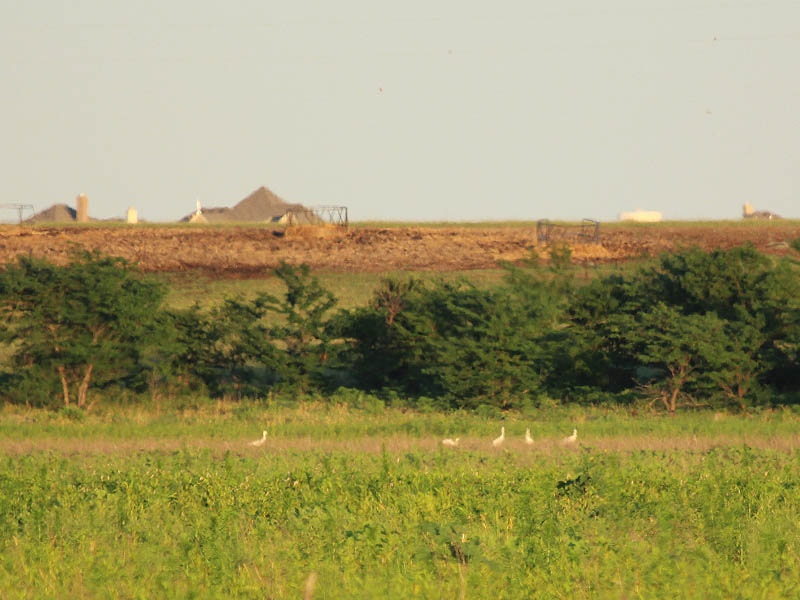
As the shadows began to get long the cranes were on the move again, returning pretty much to place where I first found them. I called it a night at that point, shaking my head in disbelief. Its going to be the summer of the Whooping Cranes.

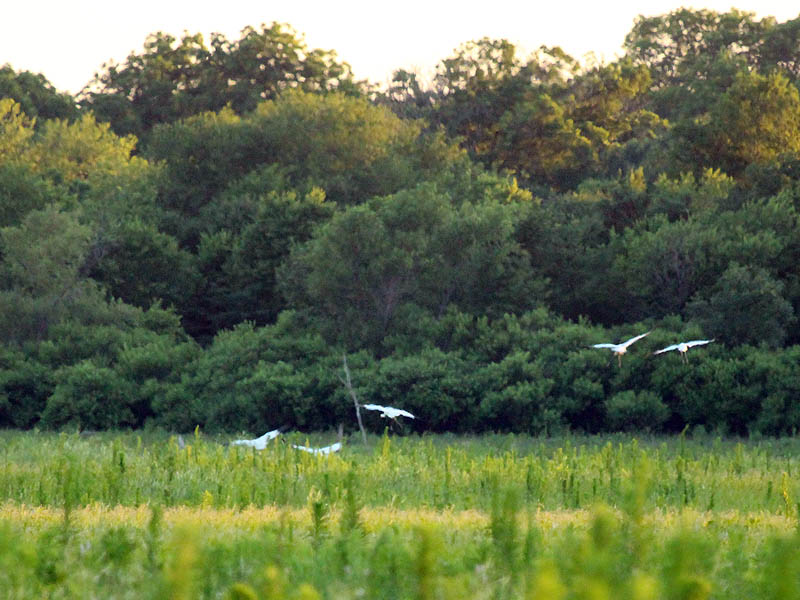
NOTE: This post is part of a continuing series of observations: [ Next >> ]



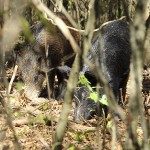
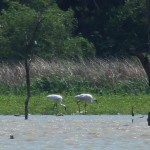


Chris, the strange flapping behavior is the mating “dance” of the cranes. It is believed to help maintain the pair bond, and they may begin doing it when the pair is initially formed and continue it periodically. The pair bond may exist for several years before a pair successfully broods eggs.
There were five Whooping Cranes that overwintered in N. Central Texas in the winter of 2011-2012, rather than on the coast.
Neat that you have gotten to see and photograph these magnificent birds. The pictures are great.
Yep, David, this is quite a thrill for me. I feel very privileged to get to see these birds. I suspected that wing-flapping behavior I saw was mating related, and was hoping to get some verification. Thanks for your input, as always. There is also the case of the odd man out with this group. There is one crane that gets singled out from the group from time to time. The reports I am getting say that it is always the same bird each time. We witnessed some aggressive behavior towards this bird over the weekend, where the group of four actual drove the one away for a short time. Minutes later the four rejoined the one (just like in the video accompanying this post), and it was as if nothing had happend. Strange.
Awesome pictures!!
Thanks, Jennifer! I think I mentioned to you that there were more Whooping Crane surprises to come… How about this!!!
Beautiful find:) May I ask where on the lake you saw these birds?
Thank you
With the welfare of the birds in mind, I will decline to reveal their exact location for the time being. I’m sure you understand.
I absolutely understand. Thank you.
Thank you, Neva!